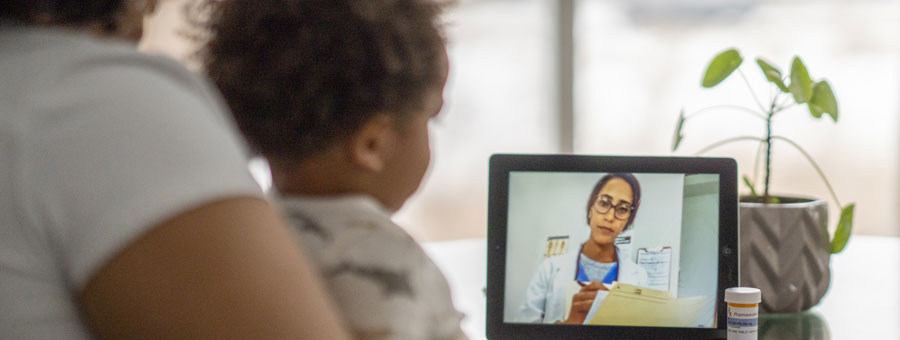Hassenfeld Children's Hospital at NYU Langone in New York went from 2,322 behavioral health virtual visits in the Department of Child and Adolescent Psychiatry in 2019 to 30,700 in 2020. The shift to telehealth happened suddenly with New York City's early COVID-19 surge in March 2020 and, in the first nine months of the pandemic, saw 700,000 telehealth appointments across all care settings at NYU Langone.
"We were thrown into telehealth somewhat abruptly with pandemic, and we had not trained for it," Jonathan Lebowitz, M.D., pediatric chief resident at Hassenfeld Children's says. "But objective structured clinical examinations give residents a space to practice how they deliver the best care to their patients under the new circumstances we were faced with."
Objective structured clinical examinations (OSCE) are simulation exercises designed to help physician-family and physician-patient communication. During the simulation, pediatric residents are presented with a patient encounter and receive feedback from observers in real time.
OSCE is not new to Hassenfeld, but the conditions around the pandemic introduced new types of simulations related to telehealth and behavioral health. Through a partnership with the Sala Institute for Child & Family Centered Care at Hassenfeld Children's Hospital, simulations bring patients and families into faculty-like roles for training purposes.
Simulation exercises are conducted for the entire pediatric residency program so providers who may not specialize in behavioral health can still field those concerns. During a routine adolescent sick visit—maybe the child is complaining of a headache—it may come up that a parent has lost their job, the child is disengaged in virtual school or that there's more fighting in the household than usual.
"In 10 minutes, a resident has to quickly implement best practices in telehealth but also assess for risk and connect this teenager to the appropriate follow-up care," says K. Ron-Li Liaw, M.D., director at Sala's Child-Family Support Services and Resilience Programs at Hassenfeld Children's.
Simulations are a four-step exercise:
- The 10-minute patient encounter. All attendees turn off their video except for the resident and the "patient," played by an actor. Family faculty, clinicians and the facilitator observe.
- After the encounter, eight minutes are reserved for immediate and individualized feedback within a small group that includes family faculty, the patient and often a clinician who observed the encounter. Someone trained in debrief facilitation leads this step.
- Interactive feedback informs the completion of an evaluation tool. This standardized digital form allows all learners to be evaluated using the same metrics. Lebowitz says it also helps the education team better understand physician-family communication and find ways to better train residents based on strengths and challenges.
- Twenty minutes are reserved for a full group debrief, which brings all resident learners together to reflect on the experience and general themes. They discuss what was challenging and what went well. Clinical leaders also present themes from all the cases they observed.
Real-time feedback during the large group debriefs have been positive. Lebowitz says residents felt challenged to try new things and they felt comfortable doing so. "This is the value of simulation," he says. "It allows the learner the space to try something new, reflect on it and decide how to change their practice going forward."



